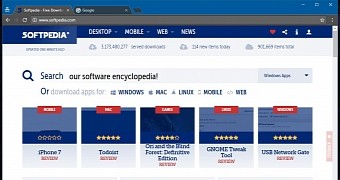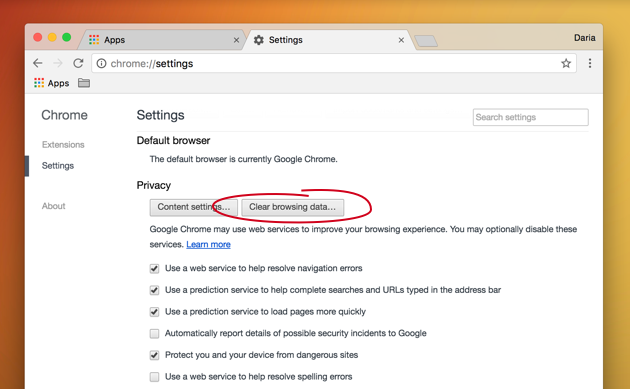Google Starts Tweaking Chrome For Mac
- Google has just announced plans to gradually phase out support for Chrome apps on every program expect for Chrome OS. Google starting later this year. Google starting later this year. Therefore, new Chrome apps update will be available only to Chrome OS users and won’t be accessible on Windows, Mac, and Linux.
- If browsing speed is important to you—and it should be—you'll probably be interested to know that there are ten simple flag modifications you can make in Google Chrome in order to achieve the fastest browsing speed possible. A few months ago, Dallas covered six ways to speed up the Chrome mobile browser on a Nexus 5, and if they're good enough for his Android phone, they're good enough for.
While there are plenty of tips and tricks to and improve its performance, some of them are just plain useless, and may even slow down your computer. Over the years, we have seen many Windows-tweaking myths circulating around on the Internet, so it is time for us to clear the air. My th 1: Clear Prefetch to Increase Speed This is one of the biggest myths on the Internet. It says that clearing Prefetch regularly speeds up yourWindows PC. For those who don’t know, Prefetch is kind of like a cache for your Windows applications. Whenever you launch an application in your Windows machine, Windows will create a small.pf file inside the Prefetch folder which records all the data that is required to launch that application. When you relaunch that application, Windows will fetch and load the data from the.pf file, essentially making the subsequent startups much faster.

Your PC & Mac Tweaking Source. Thursday, September 29, 2011. Apple Mac OSX Lion: Start Google Chrome In Incognito Mode Open Apple Script; Compile the code: do shell script 'open -a Google Chrome --new --args -incognito' Save as Application; Option: Change its icon using copy and paste from the Get Into.
The main reason that most people suggest to clean the Prefetch folder is they think that the Prefetch folder builds up a lot of useless files in the long run. In reality, Windows only stores the loading data of the most recent programs that you launched. If you clean the Prefetch folder regularly, then you are slowing down the system performance rather than improving it. Windows wastes its time and resources to start every program from scratch and creating a new.pf file inside the Prefetch folder.

Myth 2: Disabling Pagefile in Windows Many people will tell you to disable the pagefile feature in Windows to get a big performance boost. Well, this tip is pointless and slows down the overall performance.
For starters, what Pagefile does is whenever your system runs low on memory (RAM), Windows will swap the least used memory bits into a hidden file called “Pagefile.sys” located in the root directory of the C drive. This process frees up your RAM so that you can run more applications without crashes or other problems. The main reason many suggest to disable the Pagefile feature is many think that Windows is really inefficient in using Pagefile and obviously RAM is much faster than the regular hard disk.
This is true only if you have a large amount of RAM. For those computers with only 1 or 2GB of RAM, disabling Pagefile may cause applications to crash or behave abnormally due to the lack of virtual memory. So, unless you have tons and tons of spare memory, don’t disable the Pagefile feature. Myth 3: Enabling DisablePagingExecutive The “DisablePagingExecutive” feature is disabled by default and many people will tell you to enable it.
The actual fact is that enabling DisablePagingExecutive is unnecessary. When you enable this feature, Windows will always keep the Kernal in the memory (RAM) rather than paging it into the hard disk when needed. Once again, this feature depends heavily on the amount of RAM on your machine. If you have very little memory (like 1GB for PC), then changing this setting actually slows down your system due to lack of memory. In some situations, it may even crash the OS.
Even though this feature helps in debugging Windows PCs, changing this feature doesn’t yield any performance boosts whatsoever. You will be better off by keeping it in the default state. Myth 4: Using ReadyBoost ReadyBoost has been around since Windows Vista and has been heavily promoted by Microsoft. However, it is really useful only when you have very little amount of memory and a slow hard disk. Actually, what happens in the background is Windows has a small feature called SuperFetch which analyses your most frequently used programs and pre-loads all the required data and libraries of those programs into the RAM for faster loading times.
Google Starts Tweaking Chrome For Mac Free
When you enable, Windows swaps all that SuperFetch data into the USB storage which in turn gives you some free memory. This looks good, but the underlying issue is, USB storage is rather slow when compared to the system memory. So, unless you have a very old PC with very low memory, just don’t bother with ReadyBoost. Myth 5: Defragmenting manually Defragmenting your hard disk is a proven way to speed up your computer, but long are the days where you need to do it manually and regularly.
Can Google Chrome Be Used Mac
Windows now defrags your hard disk automatically and optimally (unless you told it not to do so). If you are using SSDs for your operating system drive, then defragmenting is just irrelevant, as SSDs work totally different from the regular hard disks. So, unless you have specifically disabled the automatic defragmentation in your, you don’t need to manually defrag your hard disk. Conclusion Windows is big and complicated, so whenever you see a rare tip or software claiming that there will be 10 times or 20 times the performance boost – take a closer look at the workings as this may be useless or it may even make your system slower. So what do you think of these above “optimization myths?” Do share your thoughts using the comment form below.